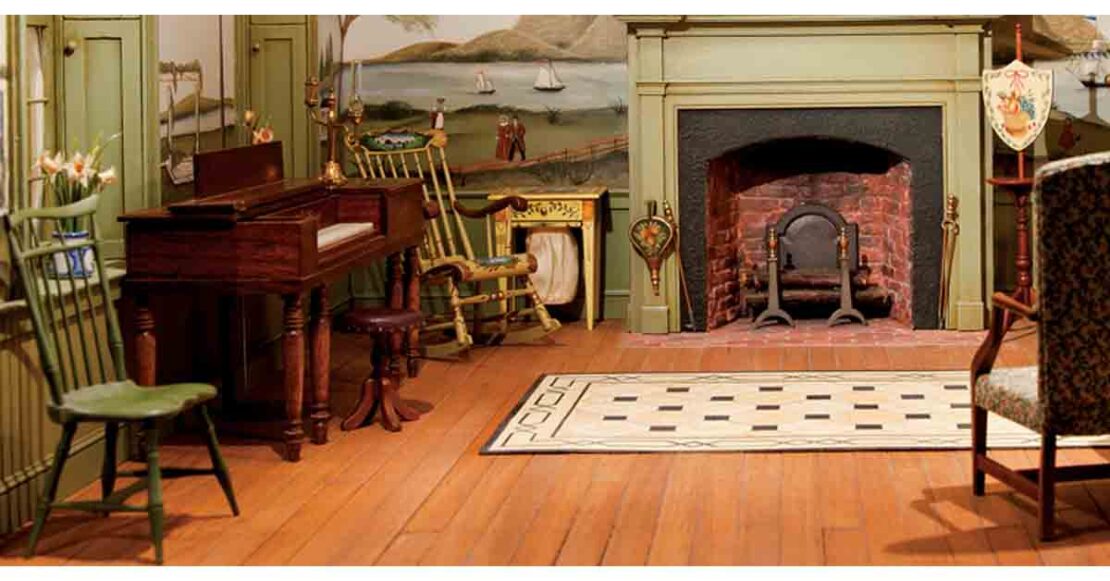Where Can I Sell American Furniture & Folk Art?
If you want to sell your American furniture or folk art, you should look for a buyer who knows how valuable and beautiful your items are and is willing to pay a fair price. A Chippendale highboy, a Shaker table, or a bright piece of American folk art are all treasures that tell stories about history and how things are made. You should think about how to sell these items so that you get the best price and they go to a good home. It can be hard to work with buyers who don’t know much about the market because they might not value your items fairly or try to get a better deal. If you want to get the most money for your antiques, you should work with honest appraisers and auctioneers. This is a full guide to selling your American folk art and fine furniture.
Step 1: Get an expert opinion
Before you sell your antique furniture or folk art, find out how much it’s worth. An expert in American antiques can tell you how much your item is worth by looking at its age, condition, origin, rarity, and how much people want it right now. Don’t sell your treasure for less than it’s worth just because you don’t know how much it’s worth. This step is very important.
Why Getting an Appraisal Is Important
An appraisal shows more than just how much something is worth. For instance, a Federal-style mahogany sideboard from the early 1800s may be worth more if it has the name of a famous craftsman like Duncan Phyfe on it. There may also be a lot of value in an old folk art painting from a certain area, like a Pennsylvania Dutch piece. An experienced appraiser will look over these details and write a full report to help you set realistic goals for selling.
How to Look for a Good Appraiser
You should look for appraisers who work for well-known groups like the American Society of Appraisers (ASA) or the International Society of Appraisers (ISA). These experts follow strict ethical rules and know a lot about American folk art and furniture. If an appraiser offers to buy your things right away without giving you a formal appraisal first, be careful. This could mean they have a conflict of interest. A fair appraiser will give you an honest price and usually charges a flat fee or an hourly rate.
What to Look Forward to During the Appraisal
The appraiser will look at your item to make sure it is real, in good shape, and has historical value. They might want to know where the item came from, if it came with any paperwork, and if it had any repairs done to it before. For example, a Shaker piece that is in great shape can be worth a lot more than one that is worn out or badly restored. You can use the appraisal report to help you sell or negotiate.
First Choice: Selling at an Auction
Reputable auction houses let you buy and sell fine American furniture and folk art. Serious collectors and sellers who know a lot about antiques go to auctions. Bidding against others often makes prices go up more than you thought.
Benefits of Selling at Auction
There are a number of important benefits to auction sales for people who sell fine American furniture and folk art. They usually get more bidders than private sales do. This can lead to bidding wars over rare items, like an 1800s painted New England blanket chest, which can raise the final sale price by a lot. Also, auctions attract qualified buyers like museum curators, interior designers, and private collectors who know a lot about American antiques. This makes sure that your items go to people who are knowledgeable and really want them. Auction houses also offer professional marketing services by handling advertising, cataloging, and displaying your items with clear pictures and detailed descriptions. This draws in motivated buyers and increases your chances of making a sale.
Things to Think About
Auctions can be profitable, but they come with costs like seller’s commissions (which are usually 10% to 25% of the final price) and extra fees for taking pictures, making catalogs, or storing items. Before you give your things to an auction house, make sure you know their rules. Pick an auction house that is known for Americana, like Sotheby’s, Christie’s, or a smaller, more specialized local company like Skinner or Pook & Pook.
How to Get Ready
Before you sell your fine American furniture or folk art at auction, you should think about a few important things to make sure you have the best chance of success. First, talk to the auction house to find out when the best time for your sale would be. For example, you could schedule your items for an Americana-only auction when interest is highest. Setting a reserve price is also important to protect your interests because it sets a minimum amount that your item won’t be sold for. Providing provenance, which is any documentation or historical information that backs up the authenticity and story of your piece, can also make it much more appealing to potential buyers and raise its value.
Another choice: Selling to antique dealers or appraisers
You could also sell directly to people who know a lot about American furniture and folk art and the market. Appraisers who also buy and sell or know collectors can give you a fair price or connect you with buyers who are interested.
Why should you sell to dealers or appraisers?
There are some clear benefits to selling your fine American furniture or folk art to dealers. Dealers who know a lot about American antiques can quickly tell if your carved folk art figure or Queen Anne chair will sell and fit in with what people want right now. With this information, they can make smart offers and give advice throughout the process. Also, selling to a dealer is usually easier and faster than auction because you usually get paid right away after you accept their offer. Dealers also often have established relationships with clients and institutions that want to buy these kinds of things, so you can be sure that your piece will find a good home.
Things to be careful about when selling to dealers
Make sure that any offer is fair and based on a good assessment. To see how interested the market is, compare offers from different dealers. Be careful of dealers who pressure you or offer prices that are much lower than the market value. This could mean that they are trying to take advantage of your lack of market knowledge.
Getting to Know Each Other
It can be helpful to find a dealer you can trust if you have a lot of things to sell. They can help you sell your home, tell you about market trends, and help you with future appraisals or sales.
More Tips for Selling Your Antiques
It is important to look at past auction results on sites like LiveAuctioneers or Sotheby’s to get an idea of the market before you sell your fine American furniture or folk art. This will help you set realistic expectations and understand how much similar items have sold for recently. You shouldn’t try to restore something yourself unless you are a professional. Cleaning or fixing something incorrectly, like taking off the patina, can lower its value a lot. Auctions and dealers are usually better for selling high-value items, but online marketplaces like 1stDibs or eBay can work for lower-value items as well. However, they take more time to list and check out potential buyers. Lastly, keep detailed records like appraisals, messages with buyers, and proof of ownership to help with negotiations and make sure the deal goes smoothly.
Why should you hire experts?
Experts understand how valuable and important your fine American furniture and folk art are. They put you in touch with buyers who know what they’re doing, whether you want the thrill of an auction or the ease of selling to a dealer. Antique Appraisers Auctioneers can help you with appraisals, help you bid at auctions, or buy things directly. We help you get the most money for your valuable items. Get in touch with us today.





